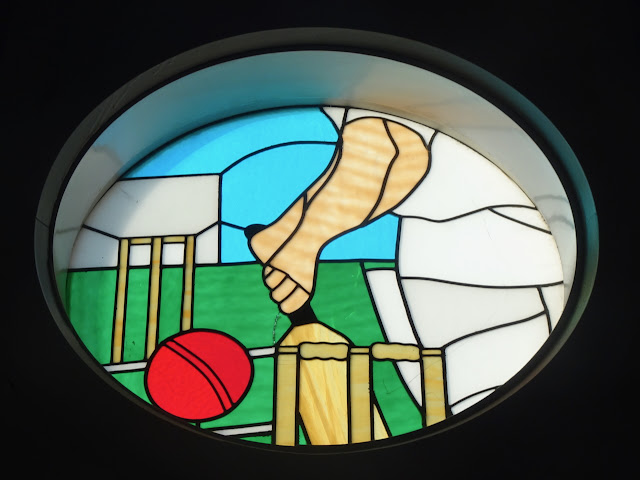‘He began to think that if he passed away from this laughing and murmuring crowd, and went out to the end of the pier, and quietly slipped down into the placid waters, the world would be none the worse for the want of him, and a good deal of heart-sickness would come to an end.’ This is from Sabina Zembra, a lesser known novel set in Brighton by Victorian author William Black.
Black was born in Glasgow in 1841. He initially studied art, but became a reporter for Scottish newspapers. Later, in London, he worked for the
Morning Star and
Daily News, serving as a war correspondent during Garibaldi’s campaign and the Franco-Prussian War. His breakthrough novel, A
Daughter of Heth (1871), marked the start of a prolific literary career. Known for his lyrical prose, romantic plots, and vividly rendered landscapes, he became one of the most widely read novelists of the 1870s and 1880s - see
Wikipedia.
Black’s work often balanced sentiment with moral seriousness and featured strong, emotionally intelligent female characters. His best-known novels include The Strange Adventures of a Phaeton (1872), A Princess of Thule (1873), and MacLeod of Dare (1879). Though his popularity waned after his death, in his lifetime he was widely admired, with some critics likening his descriptive power to that of Thomas Hardy or even early Tennyson.
While primarily associated with Scotland and London, Black and his second wife, Eva Simpson, moved to Brighton in 1878 - see The Victorian Web. And Brighton then featured in his 1881 novel, The Beautiful Wretch, and subsequently in Sabina Zembra. In this latter novel, the reflective opening scenes unfold along the town’s seafront and Chain Pier, capturing its blend of gaiety and melancholy. Black actually died in Brighton in 1898 and was buried near the church door of St Margaret's, Rottingdean, close to the grave of Edward Burne-Jones.
Sabina Zembra was first published in 1887 by Macmillan - the full work is freely available to read online at Internet Archive. It explores themes of love, melancholy, and social expectation against the contrasting backdrops of London and the English seaside. The story centres on Walter Lindsay, a sensitive, somewhat disillusioned man who escapes the pressures of life in London by retreating to Brighton. Though surrounded by crowds, he is inwardly solitary, his thoughts haunted by a woman named Sabina Zembra. Sabina is not just a love interest but a symbol of a purer, nobler affection in a world that feels increasingly hollow. As Lindsay wanders through Brighton’s piers and promenades, he contemplates life, despair, and romantic ideals. Here is a passage that opens chapter 15 entitled The Wedding.
‘It was a summer night at Brighton. The tall house-fronts were gray and wan against the crimson and yellow still lingering in the north-western heavens; but far away over the sea, to the south-east, there dwelt a golden moon in a sky of pale rose-purple; and the moonlight that fell on the wide waters was soft and shimmering, until it gleamed sharp and vivid where the ripples broke on the beach. Here and there the stars of the gas lamps began to tell in the twilight. There was a faint murmur of talking; young girls in their summer costumes went by, with laughter and jest; there was an open window, and somebody within a brilliantly lit drawing-room was singing - in a voice not very loud but still audible to such of the passers-by as happened to pause and listen - an old Silesian air. It was about a lover, and a broken ring, and the sound of a mill-wheel.
Walter Lindsay was among these casual listeners - for a minute or two; and then he went on, with some curious fancies in his head. Not that any young maiden had deceived him, or that he was particularly anxious to find rest in the grave; for this is the latter half of the nineteenth century, and he, as well as others, knew that Wertherism [morbid sentimentality, regarded as characteristic of Werther, the hero of Goethe’s romance] was now considered ridiculous. But somehow London had become intolerable to him; and he could not work; and - well, Brighton was the nearest place to get away to, while one was considering further plans. It was a little lonely, it is true; especially on these summer evenings, when all the world seemed, as it were, to be murmuring in happiness.
Over there was the Chain Pier. A few golden points - gas lamps - glimmered on it; and beyond it there was a small boat, the sail of which caught the last dusky-red light from the sunset, and looked ghostly on the darkening plain. In that direction peace seemed to lie. He began to think that if he passed away from this laughing and murmuring crowd, and went out to the end of the pier, and quietly slipped down into the placid waters, the world would be none the worse for the want of him, and a good deal of heart-sickness would come to an end. He did not really contemplate suicide; it was a mere fancy. Killing oneself for love is not known nowadays, except among clerks and shop-lads; and then it is generally prefaced by cutting a young woman’s throat, which is unpleasant. No, it was a mere fancy that haunted him, and not in a too mournful fashion.’


.jpeg)







.jpeg)